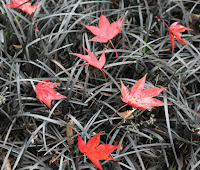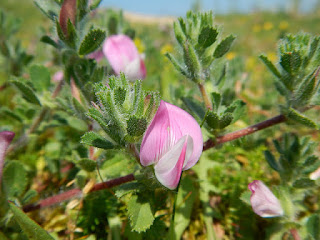| By Susan Stephens |
According to a report by the Royal Botanic Gardens at Kew in 2016, there are around 391,000 species of plants in the world and around 94% of these are flowering plants. Plants are grouped in families based on their physical and genetic characteristics. One of the largest flowering plant families is the Orchidaceae, or Orchid family with around 28,000 species, so around 10% of all flowering plant species. Recent DNA research shows that at over 90 million years old, orchids are amongst the most ancient of the flowering plant families.
Orchids can be found throughout the world in every type of habitat and climatic zone apart from the
| Coelygene cristata |
very driest deserts and glaciers, and on every continent except Antarctica. The majority of orchids are found in the tropics of Asia, South America and Central America and new species are constantly being discovered, particularly in these areas. Their tiny, dust like seed that has enables orchids to disperse and travel great distances, carried on the wind across oceans and continents to colonise the world. The majority of these tropical and sub tropical orchids are epiphytes and grow anchored to trees. They are not parasitic and so do not feed upon the tree but absorb water and nutrients from the rain, air and other debris that collects nearby with the aid of their aerial roots; the tree to enables them to reach higher elevations and so have more access to sun and air. An example of epiphytes you can see in the Garden is the Dendrobium; Dendrobium, derives from the Greek dendron meaning tree and bios meaning life. It literally means “one who lives on trees” or essentially epiphyte.
| Dactylorhiza fuchsii |
Terrestrial orchids grow on the ground and can be found in places as diverse as the hot, dry Australian deserts to the shade of temperate woodlands. They are found in areas of Russia extending to the very edge of the Arctic Circle. All of the 52 or so species of orchid found in the UK are terrestrial orchids including Ophrys apifera (the bee orchid) and Dactylorhiza fuchsii (the common spotted orchid).
Lithophytes are somewhere between the epiphytes and terrestrials in that they make their homes on rocky cliff faces. They obtain their nutrients and water in a similar way to epiphytes relying upon regular mists and rain for moisture. Extra moisture is obtained from roots that meander and penetrate into the crevices in the rocks. Some species of Paphiopedilum and Pleiones are lithophytes.
Orchids use a wide range of inventive methods to attract pollinators. Most orchids rely on specific
| Ophrys apifera, the bee orchid |
pollinators and in most cases orchid and pollinator have evolved together. Nectar is the main reward to entice pollinators but also use of colour, shape, fragrance and sometimes mimicry is applied. Orchids attracting butterflies and hummingbirds are brightly coloured but not necessarily fragrant while orchids which wish to attract moths and night flying insects are usually white or green and very fragrant at night. The Bulbophyllum species of orchid are brown or fleshy red and are foul smelling to attract the flies which pollinate them. Some orchids deceive their pollinators by mimicking the appearance and scents produced by female insects. The male insect will attempt to mate with the false female and in the process, the orchid deposits pollen on the insects head which he carries to the next flower.
The orchid family is probably one of the most important plant families from a horticultural point of view and are grown for the amazing variety
and beauty of their flowers. Enthusiasts will pay thousands of pounds for a rare specimen. Otherwise, considering the size of the family, orchids have very few commercial uses. The only commercially important product
 |
| Vanilla planifolia |
derived from orchids is vanilla which is used for flavouring foods, drinks and cosmetics. Most vanilla is produced from one species, Vanilla planifolia. The plant is a climbing vine form of orchid native to Central and South America. Vanilla production today is mainly in Madagascar which is the largest producer of vanilla beans. However the island lacks the plant’s pollinating bee species so the flowers must be hand pollinated.
The underground tubers of a terrestrial orchid, usually Orchis mascula (early purple orchid) are ground to a powder and used for cooking, such as in the hot beverage salep or in the Turkish frozen treat dondurma. Traditional Chinese medicine uses orchids extensively for combating various different ailments. Of the thousands of species of orchids known to us, about 50 orchid species are used in Chinese herbal medications.
 |
| Pleione formosiana |
Here at the garden we have a large display of around 75 different species of orchids mainly in the sub tropical and tropical glasshouse. These include epiphytes such as Coelogyne and Dendrobiumspecies many of which are displayed on our fake but very realistic trees in an effort to replicate their natural habitats. There are also many terrestial orchids displayed in pots in the sub tropical glasshouse
including Stenoglottis longifolia with it’s spikes of many small, lilac, speckled flowers and Paphiopedilumspecies often known as slipper orchids because of it’s pouch like lip. The amazing twining vines of Vanilla planifolium can be found in the tropical glasshouse. Outside in the Chinese Herb Garden, terrestial orchid Pleione are displayed in the summer and the Dactylorhiza fuchsii can be seen growing beside the lake. Whatever time of year you visit the garden you will always find orchids in flower in the tropical and sub tropical glasshouses. Right now Coelogyne cristata, an epiphytic orchid from the cool monsoon forests of the Himalayas, is covered in cascades of brilliant white flowers with a bright yellow centre and wavy petals. It has rounded pseudobulbs and the light scent of jasmine. Another Coelogyne flowering in the sub tropical glasshouse at the moment is Coelogyne flaccida with it’s long racemes of creamy white flowers with yellow and brown markings. It has a sweet, light scent and cone shaped pseudobulbs which resemble bananas. The Dendrochilum glumaceum which is native to the Phillipines, is putting on a fantastic display with masses of long feathery pendulous spikes containing two rows of small pure white flowers with a yellow lip and smelling of sweet hay.
| Dendrochilum glumaceum |













